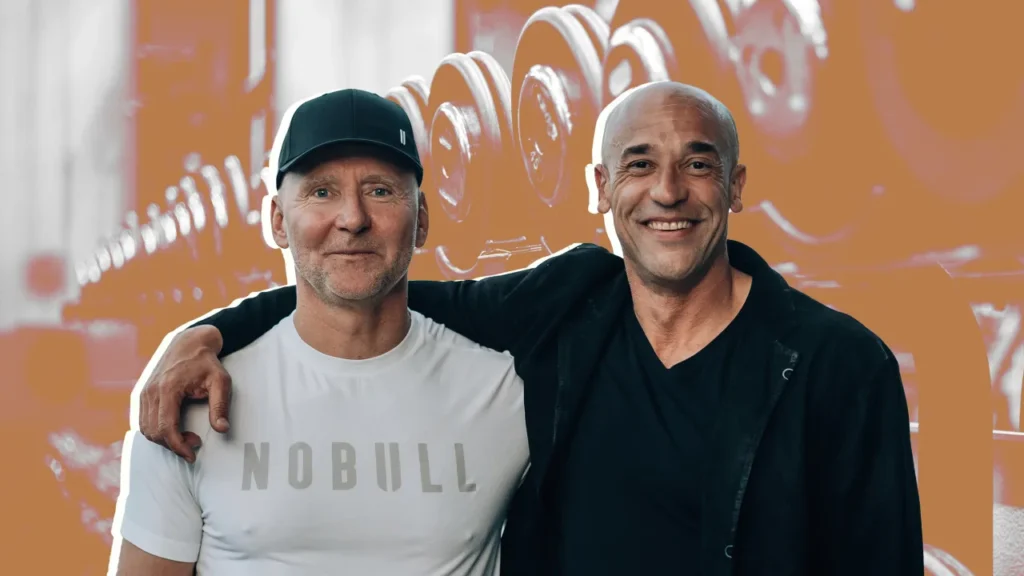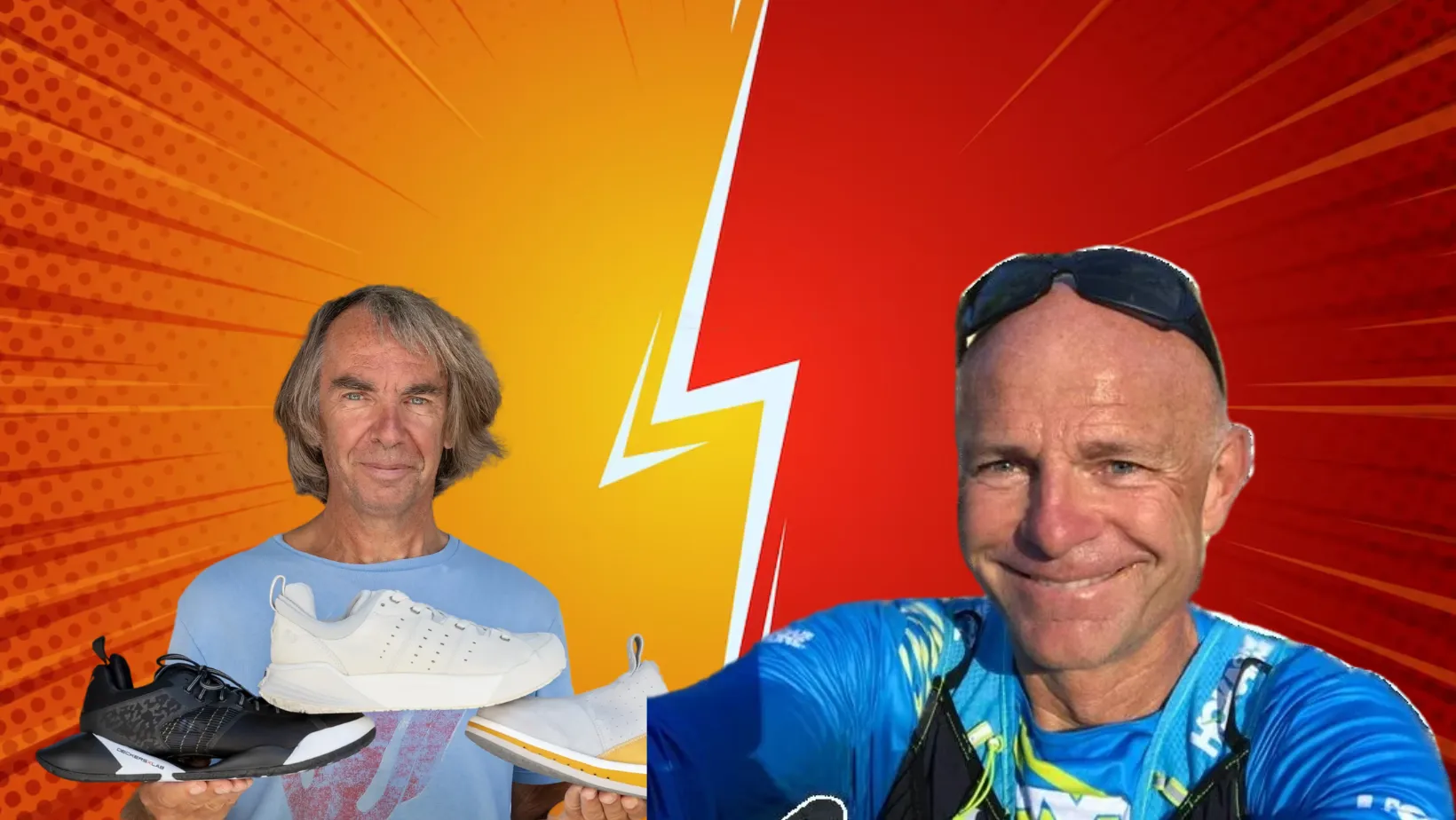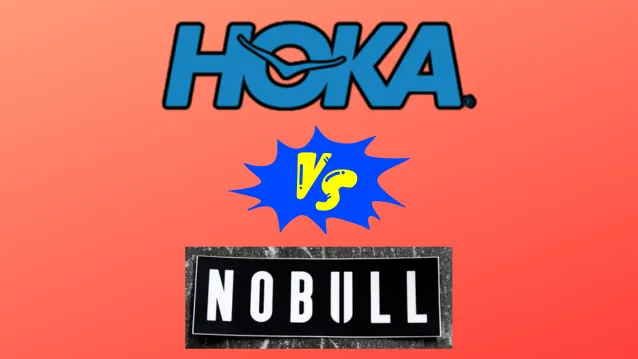With so many athletic shoe options on the market, it can be hard to decide between leading brands like Nobull and Hoka.
This comprehensive comparison covers key differences between these two shoe companies including comfort, durability, price, style, popularity, and ideal users.
Read on to learn which brand is better suited for running, CrossFit, and your individual performance needs.
Comparison Table Between Nobull And Hoka:
| Category | Nobull | Hoka |
|---|---|---|
| Founded In | 2015 | 2009 |
| Comfort & Fit | Snug, supportive fit | Plush, cushioned ride |
| Color Options | Limited color options | Wide range of colors |
| Durability | Very durable outsoles | Less durable than some brands |
| Performance | Designed for high intensity training | Ideal for long distance running |
| Design & Style | Understated, minimalist look | Bold, chunky silhouette |
| Popularity | Growing in popularity | Established brand with loyal following |
| Best Selling Model | Trainer + | Bondi 8 |
Nobull Overview:
Founded in 2015 in Boston, Massachusetts by Marcus Wilson and Michael Schaffer, Nobull has quickly made a name for itself in the performance footwear market.

This talented team of entrepreneurs set out to create athletic shoes optimized for high-intensity workouts like CrossFit, weightlifting, and HIIT training.
To achieve this goal, Nobull incorporates several key technologies into their shoe designs.
The Nobull Performance Plate located in the midsole provides firm yet flexible cushioning that keeps your feet supported during lateral movements.
Nobull’s Superfabric upper material is extremely durable while also being lightweight and breathable.
For the outsole, Nobull uses high-grip carbon rubber that grips flooring and pavement without wearing down too quickly.
Overall, Nobull shoes are known for their understated, minimalist look with limited color options and a focus on performance over flash. The shoes break in quickly and offer a snug, secure fit ideal for training.
The combination of technologies like the Performance Plate and Superfabric upper make Nobull one of the most durable and high-performing shoes available for CrossFit and weightlifting.
If your goal is to find a shoe that can stand up to intense workout regimens, Nobull is an excellent brand to consider.
Hoka Overview:
Founded in 2009 by Nicolas Mermoud and Jean-Luc Diard, Hoka One One burst onto the scene with their super thick midsoles, aiming to provide maximum cushioning for runners.

Initially, their oversized design was polarizing. But as more runners experienced the plush ride, Hoka gained a cult following among ultramarathoners and trail runners.
Hoka remains focused on cushioning and stability to create a smooth, comfortable run. Signature technologies like the Meta-Rocker outsole encourage a natural gait cycle and transition. The roomy toe box allows your feet to splay and relax over long miles.
For runners who struggle with joint pain and hard impact, Hoka’s pillow-like foam brings sweet relief. The soft landings and energetic rebound make each stride feel effortless. It’s easy to see why Hokas have a reputation for comfort.
Hokas aren’t the most flexible shoe due to the higher platform. And the bulky silhouette isn’t for everyone. But for runners craving a cushy feel, Hoka delivers plush shoes that can go the distance in blissful comfort.
Major Differences Between Nobull and Hoka:
Here we will compare Nobull and Hoka in different important sectors to determine which brand can be ideal for you.
1) Comfort and Fit
The extra cushioning and padding in Hoka shoes make them some of the most comfortable running shoes around. They have a plush, pillowy ride that feels great when you’re pounding the pavement for mile after mile.
Nobull shoes have a more snug, performance-driven fit geared toward keeping your foot secure laterally during training. The thinner, firmer midsole keeps you closer to the ground for stability during lifts and plyos. Nobull shoes conform to your foot for a tightened feel from the first wear.
So Hoka wins for comfort during long runs while Nobull offers superior hold during training workouts.
Also Check Out: Allbirds VS Hoka: Which Is Better For You?
2) Durability and Performance
When it comes to withstanding high-intensity workouts, Nobull is hands-down the more durable and performance-driven shoe.
The carbon rubber outsole, Superfabric upper, and Performance Plate midsole allow Nobull shoes to handle intense training like CrossFit, HIIT, and weightlifting day after day.
On the other hand, Hokas are designed more for the repetitive motions of road and trail running so the foam cushioning tends to break down faster. However, Hoka outsoles offer great grip and flexibility on uneven terrain during long runs. The rockered sole also helps propel you forward mile after mile.
For CrossFit-style performance, Nobull is your best bet but Hoka excels on the run.
Also Check Out: Sorel VS Hoka: Which Is Better?
3) Price
Both Nobull and Hoka offer shoes covering a wide range of price points to match different budgets. Nobull’s options generally start around $140 while Hoka’s entry-level shoes are typically priced around $100.
The average cost of most Nobull and Hoka models falls between $100-$150. However, Hoka also offers premium styles that exceed $200 while Nobull’s most expensive shoes max out around $200.
Ultimately, getting the right fit and performance you need should drive your buying decision more than the price. But if budget is a main concern, Hoka does offer more choices on the lower end while still delivering on comfort, cushioning, and support.
For the highest quality materials and construction, expect to pay over $150 for shoes from either brand.
Also Check Out: Hoka VS Adidas: Which Is Better?
4) Design and Style
When it comes to aesthetics, Nobull shoes have an understated, minimalist style compared to the chunky, boxier silhouette of most Hoka models.
Nobull shoes come in muted colors and do away with unnecessary details, giving them a sleek, straightforward look.
Hoka leans into vivid gradients, patterns, and color-blocking, yielding eye-catching designs. The exaggerated midsoles and curves give them an avant-garde style appealing to many runners.
In terms of versatility, Nobulls can be worn to the gym or out about town while Hokas are best suited to athletic use. If you like flashy shoes that make a statement, Hoka has Nobull beat. But if you prefer a refined, performance-driven look, Nobull’s pared-down style can’t be matched.
Also Check Out: Hoka VS On Cloud: Which Is Better?
5) Popularity
As an established veteran in the athletic shoe market, Hoka has attained massive popularity and brand recognition, especially among long-distance runners. Sponsored athletes like Jim Walmsley and Jen Rhines have added to their prestige.
While Nobull is relatively new to the scene, their shoes’ explosion in popularity among CrossFitters and weightlifters has been meteoric. It’s easy to spot Nobulls in gyms and at competitions but Hokas still dominate running events.
As Nobull continues to get exposure through sports like CrossFit and prove their mettle, they may one day catch up to Hoka’s widespread fame.
For now, Hoka remains the first name people think of for running while Nobull has carved out a niche in the training world. But both brands have clearly struck a chord with their devoted followers.
Also Check Out: Altra Vs Hoka: Which Is Better?
6) Target Market
Hoka and Nobull have differentiated themselves by catering to different primary audiences.
As discussed, Hoka designs its technology and features specifically to serve runners seeking comfort and support for long distances. Their maximalist cushioning provides impact protection vital for pavement pounding.
Nobull homes in on the needs of CrossFit athletes, weightlifters, and other high-intensity trainers who require flexibility, breathability, and durability when doing things like box jumps, burpees, and lateral slides.
The two brands have wisely focused their products and marketing on buyers whose priorities align with the inherent strengths of their shoe designs. Hokas showcase technicolor soles on open roads while Nobulls display hardcore understatement in gyms – two shoes engineered for two very different athletes.
Final Verdict:
In the battle of Nobull vs Hoka, there isn’t actually a winner that’s better across the board. Each brand offers compelling advantages over the other in certain areas.
For road and trail running, Hoka is hard to beat. The signature cushioning and rockered sole create the ultimate comfort and support during long distances. Their innovative technology and vast color options give Hoka the edge for serious runners. But for CrossFit, HIIT, and gym training, Nobull prevails. The combination of durability, flexibility, and stability make Nobull ideal for high-intensity lateral movements and lifting.
So in deciding between the two, consider your primary athletic focus. Go with Nobull if peak performance during hardcore workouts is the goal.
Opt for Hoka if you want to shave time off your next marathon. There are good reasons these brands have cultivated such loyal followings in their respective activity niches. Choosing the shoe that aligns with your training needs will ensure you get the right fit for your feet and fitness.


